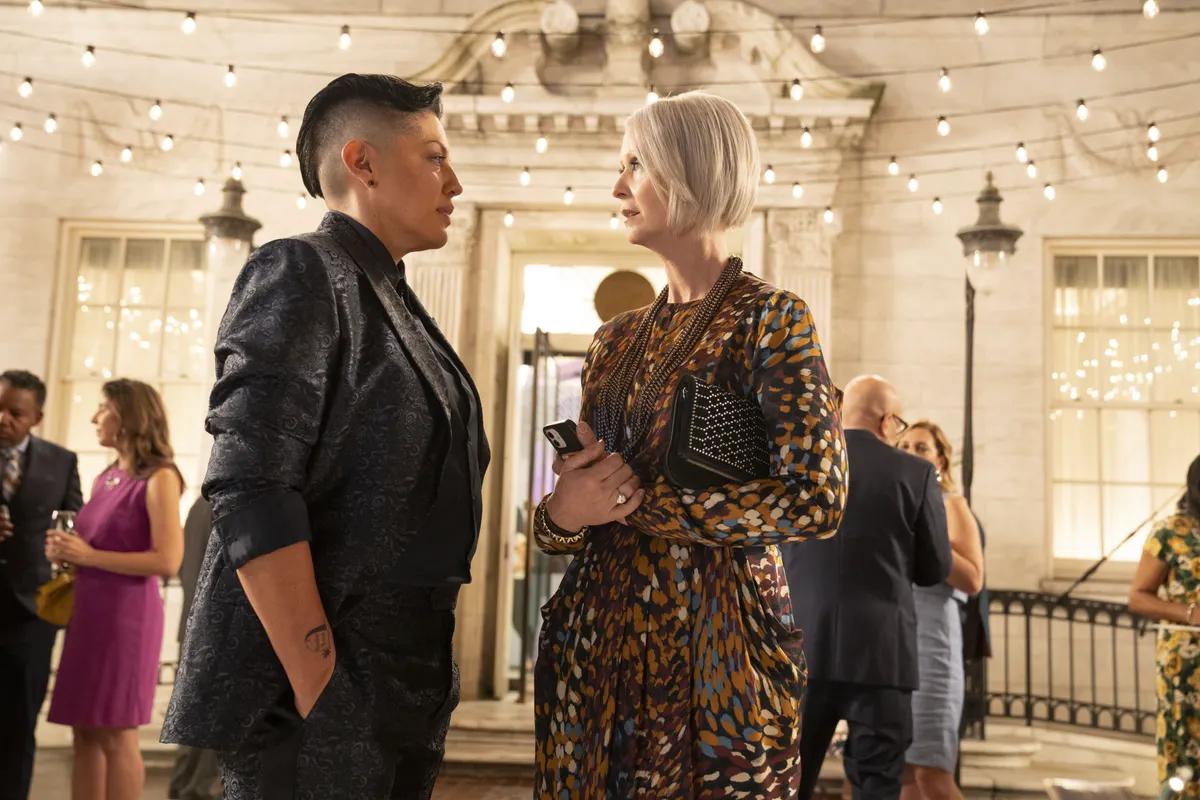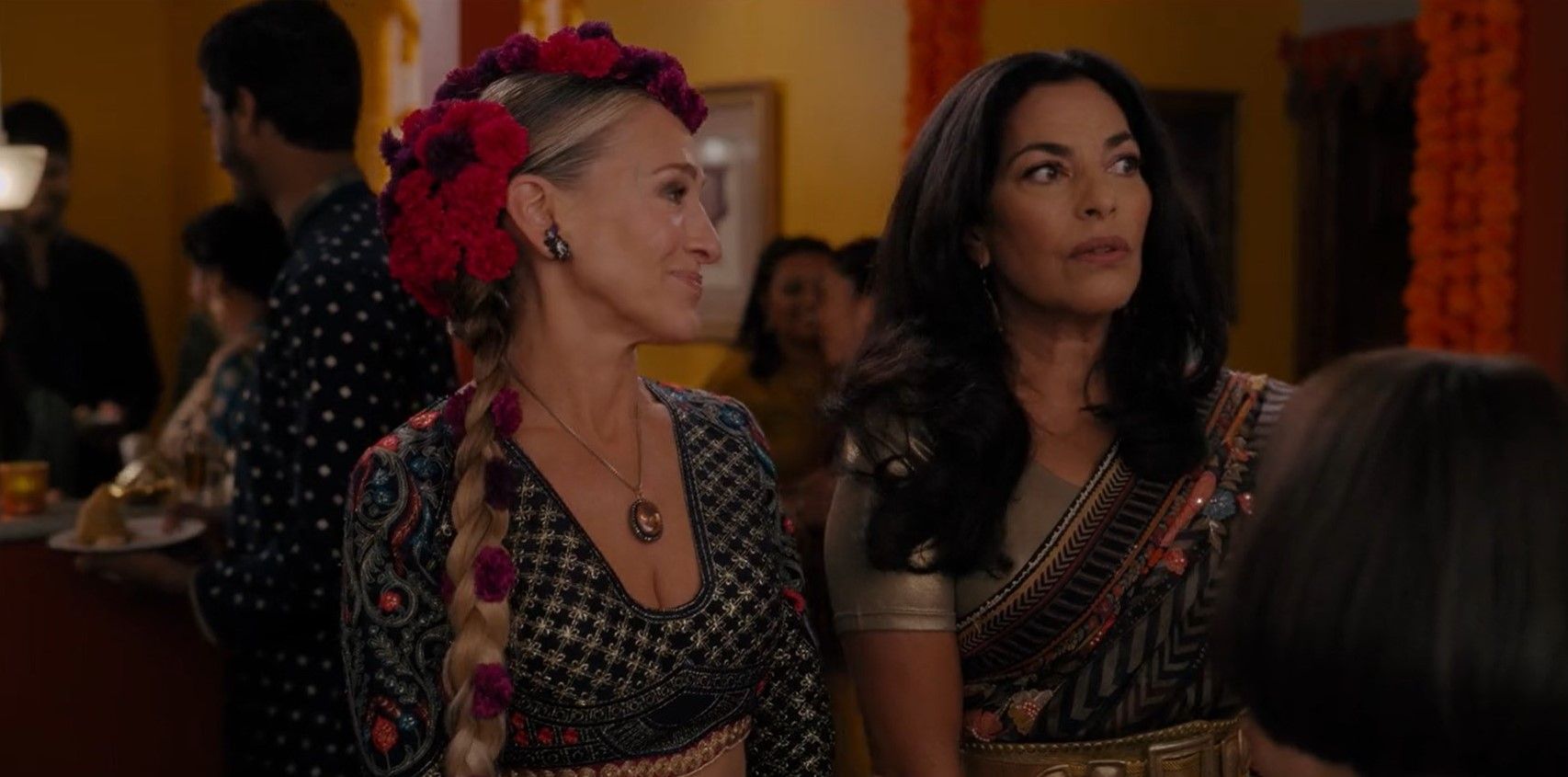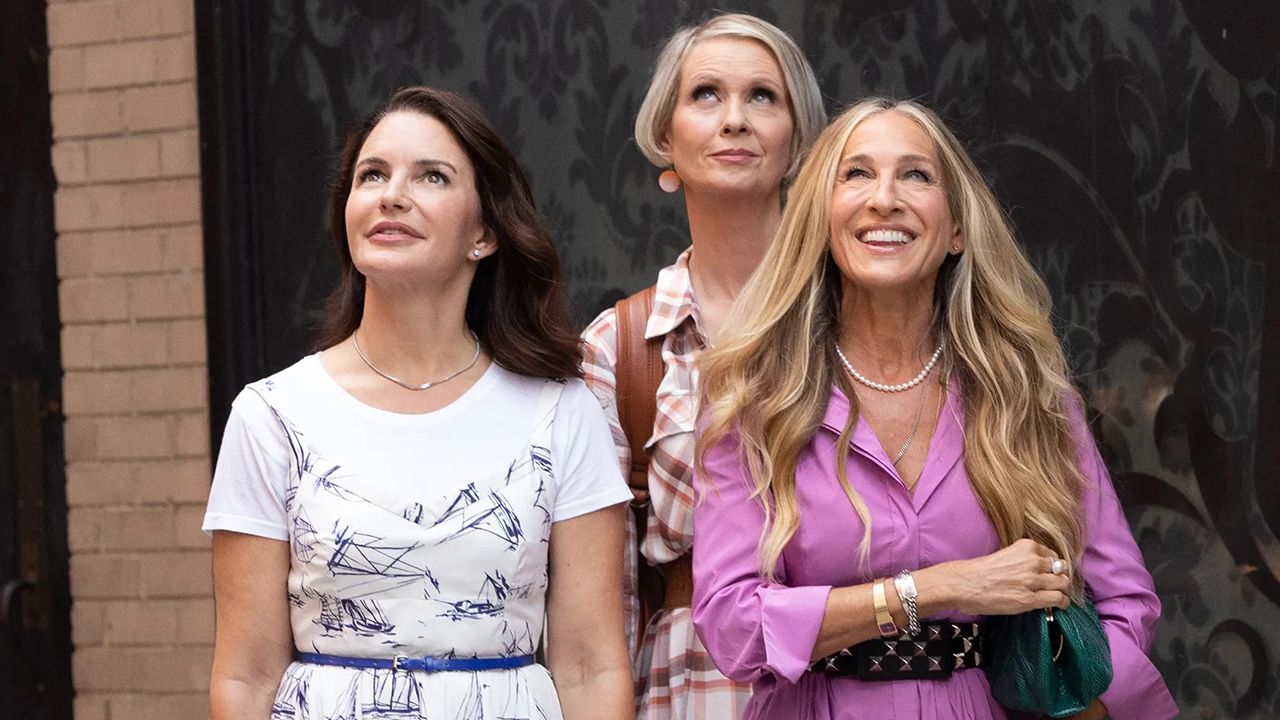By Ben Carpenter, Film & Television Editor
Carrie, Charlotte, Miranda and Sama…. Wait, scratch that. Carrie, Charlotte and Miranda. This is the kind of habitual break attempted by the most ardent Sex and the City (1998-2004) fans when the sequel series, And Just Like That… was first announced back in January last year. What followed was a seemingly never-ending discussion around the inevitable absence of Kim Cattrall, one-quarter of the fabulous New York ladies who had shunned any future opportunities to reprise her iconic role of Samantha Jones, after a decades-long feud between her and Sarah Jessica Parker.

However, producer Michael Patrick King was quick to clarify his intent with the series, epitomised in the decision to drop the iconic Sex from the title. He insisted AJLT was a new chapter, a fresh start for our remaining women, now in their mid-50s. And in that respect, he delivered.
And as further shocking as this may sound, life without Samantha wasn’t too bad. Concluding its 10 episode run last week, AJLT has caused the kind of cultural discussion reminiscent of the original series, albeit not for the same progressive reasoning.

Premiering with a bang on December 9th, episode one saw potentially the most controversial decision in the series’ history since Carrie’s decision to cheat on Aiden. And what better way to deliver such a blow than on a peloton bike?- a piece of equipment almost as egregiously arrogant as the man who died on it- Mr Big’s (Chris Noth) heart attack at the end of the first episode caused a huge stir online and quickly divided fans.
However, this discourse quickly dissipated into a strange form of relief after reports of Chris Noth’s sexual deviances came to light just a week later. What seemed to effectively register AJLT dead on arrival may have actually been its saving grace, as the rest of the series devoted its time to the year following Big’s death and the events that unfurl, reducing his screen time to nil.

As the weeks moved forward and the story progressed, we were met with jarring shifts in both tone and quality. Whether Carrie (Sarah Jessica Parker) was having hip surgery, Miranda (Cynthia Nixon) was knee-deep in an unexplained bout of alcoholism or Charlotte (Kristen Davis) was in the midst of a menstrual crisis, AJLT jumped from hilarious to heartfelt to hideous every other episode.
A handful of new characters were better integrated into the trio than others, with estate agent Seema’s (Sarita Choudhury) introduction being the most natural. This integration contrasted that of supposed comedian Che Diaz (Sara Ramirez), one of the most utterly unlikeable individuals to grace our television screens in decades.
But outside of characters, both old and new, the most significant development in the series came in its themes. Long gone are dinner discussions of clothing and chlamydia; instead, the ladies welcome death and divorce to the table. AJLT spends no time pretending that ageing doesn’t bring with it a whole new collection of difficulties, and it is when the series addresses these difficulties that it truly soars. In fact, it is these discussions many viewers tuned in for, not the ham-fisted political reparations forced into the series’ first few episodes.

Whilst at times draining, seeing Carrie mourn Big is a powerful experience as a viewer who spent years watching her, as Carrie quotes in Sex and the City 2 (2010), “running around New York like a crazy person”, trying to get the one man she loves to love her back. Seeing her other half torn from her after years of romantic trife worked not just as a way of moving the narrative forward but as an opportunity to reinvent an iconic character.
As the series came to a close, Carrie had somehow re-birthed herself and regained the skip in her step. And the same can be said for Miranda, who didn’t just break free from the constraints of alcohol dependency but the constraints of heteronormativity also. Even Charlotte, a notoriously conservative character, can be seen displaying genuine character growth in her acceptance of her non-binary child.

And speaking of perfectly imperfect, how could I possibly forget to mention the clothes. Often referred to as Sex and the City’s fifth character, the wardrobe this time around proved a little less reliable but equally provocative.
Pulling away from the lifeless creations of the second film, designer Molly Rogers threw colour, class and creativity into the mix for Carrie as she stylishly adjusted to the mid-50s lifestyle.
Donned with a collection of midi-dresses and vintage couture, Parker pulled off *almost* every look seamlessly. Miranda’s wardrobe was adapted equally as successfully, with clean-cut shirts and high-waisted trousers perfectly accenting her fresh grey bob. Even Charlotte, known for her adherence to traditional all-American fashion, can be seen in a series of more outlandish designer pieces.

And Just Like That… this sequel series is a hard one to pin down. As a fan, I found myself week after week returning religiously to see Carrie do absolutely anything. However, justifying whether AJLT is good television brings just one word to mind: sometimes.
With rumours circulating and the season finale suggesting our women’s stories are far from over, I couldn’t help but wonder… will there be another season of And Just Like That…? Only time will tell, and I’ll be waiting not-so-patiently to find out.
Featured Image: IMDB
What did you think of the long awaited reboot?







